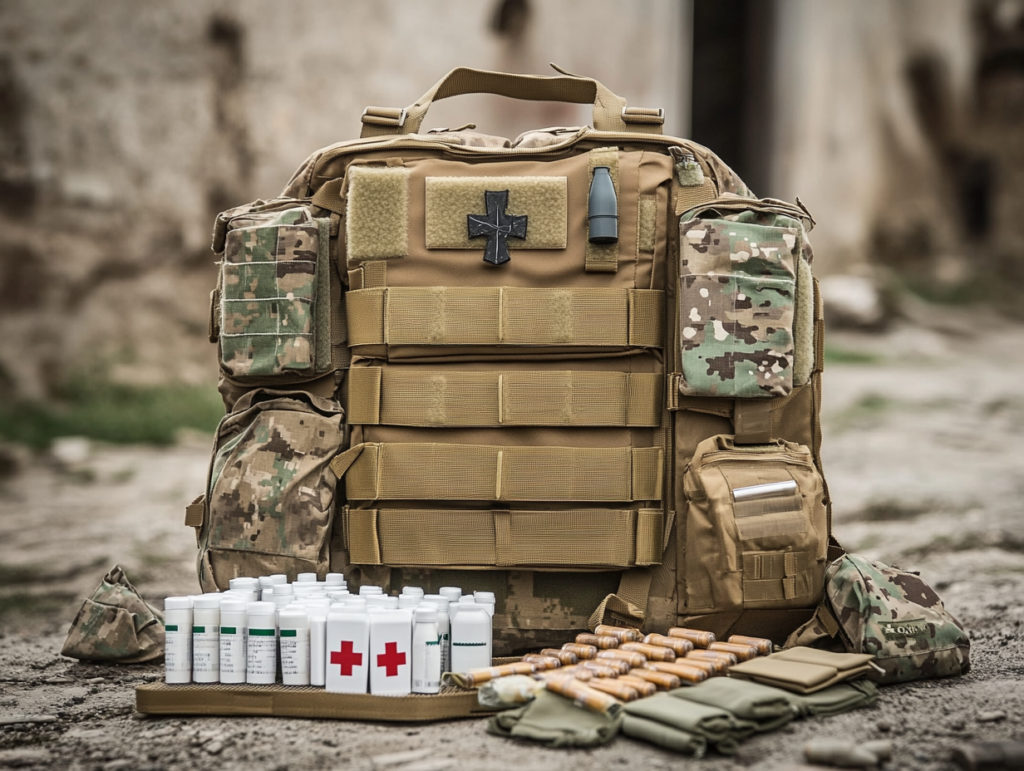Ensuring children’s safety is a top priority for parents, schools, and society as a whole.
Children’s first aid kits, essential for addressing sudden health emergencies, are experiencing increasing market demand as public awareness of safety continues to rise. Today, let’s delve into the vast market potential behind children’s first aid kits.
Precise Positioning: Defining the Market for Children’s First Aid Kits
A children’s first aid kit is a meticulously designed collection of medical supplies and equipment tailored for pediatric care.
These kits contain a wide range of essential items, including pediatric-specific medications, bandages, syringes, and oxygen masks—critical for providing prompt and effective treatment in emergency situations.
When a child experiences an accident or sudden illness, a well-equipped children’s first aid kit serves as the first line of defense in safeguarding their health.
Rising Demand: Trends in the Pediatric Emergency Medical Kit Market
Driving Factors
Increasing Incidence of Pediatric Emergencies
The global incidence of pediatric emergencies is rising.
Factors such as increased traffic accidents, a higher prevalence of chronic diseases among children, and heightened public awareness of emergency care have all contributed to the growing demand for children’s first aid kits.
For example, in traffic-congested urban areas, child injuries from road accidents are common, making first aid kits essential for immediate treatment and valuable time-saving measures.
Growing Demand for Pre-Hospital Care
With greater recognition of the importance of pre-hospital care and an increasing number of critically ill pediatric patients requiring emergency medical attention, the global demand for pre-hospital care continues to rise.
Before children can be transported to a hospital, a first aid kit can provide essential emergency care to stabilize their condition and lay the foundation for professional medical treatment.
Growth Opportunities
Technological Advancements
The continuous emergence of innovative technologies presents new opportunities for the children’s first aid kit industry. Advanced products and equipment are being introduced to enhance emergency care for pediatric patients.
For instance, some first aid kits now include smart monitoring devices that track vital signs such as temperature, heart rate, and blood pressure in real time. This data can be transmitted to healthcare providers, enabling them to prepare for treatment in advance.
Additionally, new sterilization materials and wound healing technologies have been incorporated into first aid kits, improving wound care and reducing infection risks.
Challenges and Limitations
Stringent Government Regulations
Despite the growing market demand, the children’s first aid kit industry faces challenges, particularly strict government regulations.
Governments are enforcing tighter controls on medical supplies, including quality standards, production processes, and distribution channels.
As a result, companies must strictly comply with relevant regulations to ensure the safety and effectiveness of their products.
Moreover, the rising number of hospital-acquired infections has led to even stricter oversight of medical products, creating additional hurdles for the growth of the children’s first aid kit market.
Market Segmentation: Product Types and End Users
Product Types
- Standard Kits
These kits contain common first aid supplies such as bandages, antiseptic wipes, and gauze, designed to treat minor cuts, scrapes, and wounds. They are ideal for basic first aid needs in households. - Specialized Kits
These kits are tailored for specific conditions or emergencies, including epinephrine pens for allergic reactions and inhalers for asthma attacks. They are designed for children with specific health needs.
End Users
- Hospitals
Hospitals are major purchasers of children’s first aid kits, using them in pediatric emergency rooms, wards, and other medical settings to provide immediate treatment for sick or injured children. - Households
Families purchase children’s first aid kits to ensure their children’s safety. These kits are often kept at home or in vehicles for easy access in case of emergencies. - Clinics
Clinics also require pediatric first aid kits to handle unexpected medical emergencies among visiting children.
Regional Differences: Market Analysis and Insights
North American Market
North America dominates the children’s first aid kit market due to widespread public awareness of the benefits of medical kits.
Parents and schools in this region prioritize children’s safety and are willing to invest in protective measures, resulting in strong market demand.
Asia-Pacific Market
With increasing foreign investment in the healthcare industry, the Asia-Pacific region is expected to experience the highest growth rate in the children’s first aid kit market between 2023 and 2030.
As economies in the region continue to develop rapidly, public awareness of children’s health is rising, further driving demand for pediatric first aid kits.
Conclusion: A Promising Future for Children’s First Aid Kits
The children’s first aid kit market holds immense potential and unlimited business opportunities. Whether considering the growing demand or the development prospects driven by technological innovation, this market offers significant growth potential.
Companies that seize this market trend, invest in research and development, and offer high-quality, customized children’s first aid kits will not only contribute to children’s safety but also reap substantial rewards in this expanding industry.
As children’s first aid kits become more widely adopted, they will play a crucial role in creating a safer environment for children. We look forward to the continued growth of this market, ensuring a brighter and safer future for the next generation.


